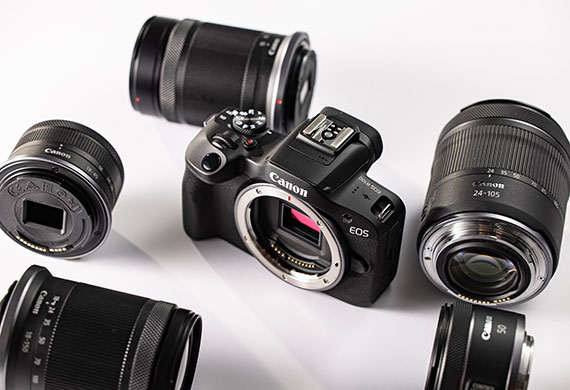- Going off-camera Speedlite tips by Daniel Linnet
-

Although using the Speedlite on-camera can give you some nice results, the real fun doesn’t really begin until you take the flash off the camera and away from the axis of the lens. Just one Speedlite is all you need to start experimenting with different lighting effects and directions.
Triggering and Controlling
The new 600EX Speedlites have built-in wireless radio capabilities and can be triggered and controlled by the STE-3 Controller unit, which sits in the hot shoe.

Light Shaping
Light shapers for off-camera Speedlites come in multiple forms and sizes making it as versatile, and more portable than the some of the larger studio based flash lighting systems.
Hardly there
Due to their compact size Speedlites can be hidden in a greater number of places within the frame, giving you greater control over where you throw the light.
Get some direction
Mounting the Speedlite on a simple lighting stand, tripod or C-stand enables the flexibility of directional placement.

ETTL or Manual
On or off the camera, your Speedlite retains full ETTL capability for fast accurate on the fly flash exposures, which is great for shooting in rapidly changing lighting conditions or where constant location changes are required. For greater exposure consistency in more controlled lighting scenarios, try switching your Speedlite to manual power control and adjust up or down to match with lens aperture.
Daniel Linnet is a Sydney based commercial, fine art photographer and educator, specialising in portrait, automotive and the environmental photography. A master of photography with the Australian Institute of Professional Photography, Daniel also founded and runs Sydney Photographic Workshops (SPW).
Find out more about SPW and don’t forget to check out Daniel’s portfolio.

Learn the fundamentals of photography composition with tips on rule of thirds, leading lines, framing, negative space, and more. Community-contributed insights to elevate your shots.

Learn how to capture the night sky with astrophotography tips from Mel White – from dark sky planning to camera settings, gear, and editing.

Compare the Canon EOS R6 Mark III, R6 Mark II and R5 Mark II to find out which camera best suits your shooting style, budget and creative workflow. Explore differences in design, image quality, autofocus and video performance.

Learn the main differences between Mirrorless and DSLR cameras in this article. Find out which camera's best for you!

Discover how travel photographer TK North captures compelling images with these six photography tips. Learn how the Canon EOS R6 Mark III helps him travel light, stay creative, and shoot anywhere with confidence.

Prime lenses ideal for producing high-quality, sharp images with better low-light performance making these types of lenses perfect for portraits and travel.

Discover the top 5 features of EOS R6 Mark II that make it an ideal camera for travel and action photography on the go.

How should you pick your next lens? Learn about lens types, focal lengths, aperture, and compatibility to help you choose the perfect lens for your needs.

Get to know your PowerShot PICK with Jas from Canon Australia. We'll take you through some great tips to get you started.

Turn your photos into creative masterpieces with these quick and easy Photoshop tips from Melbourne photographer Tom Noske.

Kim Tucci knows about the importance of capturing life with babies better than most—she has five of them! Kim’s the mum of one-year-old quintuplets with three older siblings